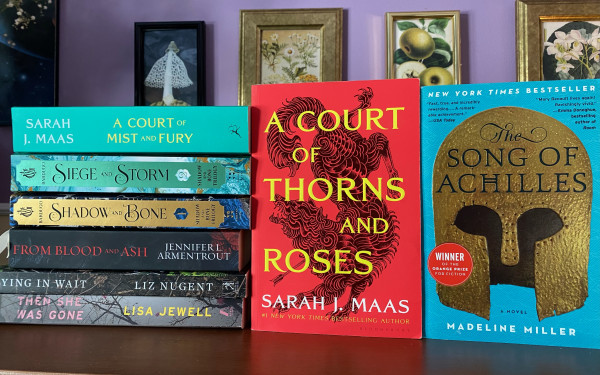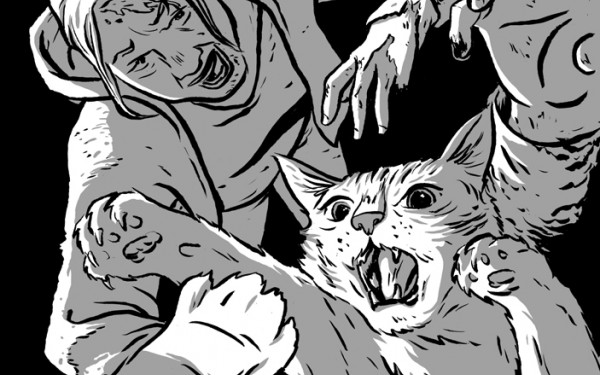Meet Award-Winning Translator Rhonda Mullins
The Art of Translation Bridges Quebec’s Bilingual Literary Culture
For Rhonda Mullins, translation is like a performative art.
“The score is already there and I’m going to do my interpretation of it.”
In early October, the five finalists for the Governor General’s literary award in the translated book category were announced. Mullins was one of them, and not for the first time. She won that award in 2015 for translating Jocelyne Saucier’s Twenty-One Cardinal to English .
“I can’t believe my good fortune,” said Mullins. She remains humble, but her talent is celebrated in the literary industry—from the big award she was nominated for, to commendations from Anne-Renée Caillé, an author Mullins translated in 2018.
Caillé described her as one of the best translators in Canada.
“She possesses a humility, a passion, a literary culture, and a professionalism that contribute to her success as a translator,” said Caillé, author of The Embalmer.
Mullins is a passionate and resourceful translator, who has been recognized and celebrated for the important work she does in bringing French works to a broader English audience.
To be shortlisted again for such a prestigious award meant a lot to Mullins.
“You’re toiling away in your own little world, working with the authors and the editors,” she said. “And, all of a sudden, to have something like that happen—the recognition—it’s very moving.”
The Embalmer is a deeply personal book to Caillé. She captured stories from her father’s life as an undertaker, after conducting a series of non-directive interviews with him.
_900_571_90.jpg)
“She wrote this poetic prose about his experiences. It felt very much like taking dictation and adapting it,” said Mullins. She read it all in one sitting.
Caillé said she was delighted that Mullins was her translator, sharing her enthusiasm for The Embalmer.
“Rhonda wanted to be faithful to several stylistic elements of the text, such as its poetic aspect,” said Caillé. “She wanted to meet me and asked me many questions about meanings or rhythm details, to make sure that she understood each subtlety.”
Translators are invited to inhabit worlds that are not their own for the duration of a project. Translating Caillé’s book led Mullins to research the minutiae of the undertaker trade.
Mullins had to translate detailed descriptions of the conditions of bodies and the process of preparing them to appear lifelike. She said she wanted to absorb the clinical aspects of the work.
Mullins spent a lot of time on undertaker supply websites, learning about the gadgets and tools used to make bodies presentable.
She could disrupt a dinner party with the gruesome details she learnt during the research process, she said.Following the cliché that writers write about what they know, translators often end up writing about what they don’t know.
“It really feels like you’re inhabiting another person’s world.”
— Rhonda Mullins
“It really feels like you’re inhabiting another person’s world,” said Mullins. “[You’re] stepping into another person’s world, and moving around in it.”
The nature of the work requires a translator to be adaptable and versatile. Translation gives an opportunity to explore and imagine a world you would otherwise never know.
“It’s the way that I look at it,” said Mullins. “I get the advantage that the manuscript is already written—you know what to do. Within that constraint there is a lot of creativity.” It’s like a window that opens up, she said. From book to book, translators navigate diverse topics, each demanding a different vocabulary.
“I feel like translators are very special people that are almost like actors in the way where they have to research and understand […] the whole style, the whole way of thinking of the person that they are translating,” said Rebecca Lloyd, bookstore director at Montreal’s iconic Drawn & Quarterly. Lloyd feels strongly that translation in the province is essential.
“[French] culture has so many books that English culture just doesn’t have access to unless it’s been translated,” she said.
In 2015, Lloyd fell for Anaïs Barbeau-Lavalette’s La femme qui fuit. She said, “it’s so wonderful to see it translated by someone that does a wonderful job of it.”
Mullins’ English translation, Suzanne, was also a 2019 Canada Reads contender.
_900_600_90.jpg)
Since the rest of the country is not as bilingual as Quebec is, French literature from this province can only be represented through English translations in the rest of Canada, explained Lloyd. For her, translating literature is “absolutely necessary and super important.”
Drawn & Quarterly doesn’t sell that many translations to Montrealers, explained Lloyd, because a high percentage of locals are bilingual. But, because the bookstore is a tourist destination, their selection of translations allow them to showcase Quebec’s talent.
“There’s commonalities between the cultures but there’s also so many differences,” said Lloyd.
“Reading is one of the best ways to bridge those gaps and to see what another world is like.”
For Mullins, translating literature in Montreal feels like bringing the English and French languages, and building a bridge between the two cultures.
“It’s great to share my work without language barriers,” said Caillé. “It is undeniable that translations and translators give more freedom and visibility to texts. We thank them for that.”
Mullins has lived almost her whole life in Montreal. She spent five years studying and working in Ottawa, and despite her social life, she said she felt like an outsider.
Mullins said she feels uniquely at home in Montreal. There is an incredibly strong literary tradition in both English and French cultures. “I feel like it’s sort of just bubbling with creativity and ideas,” she said.
“The minute I got back [to Montreal], the first day I was walking down the street and somebody says hello just out of the blue,” said Mullins. “This is the Montreal I know.”

_900_1433_90.jpg)
_600_832_s.png)

1_600_375_90_s_c1.jpg)


